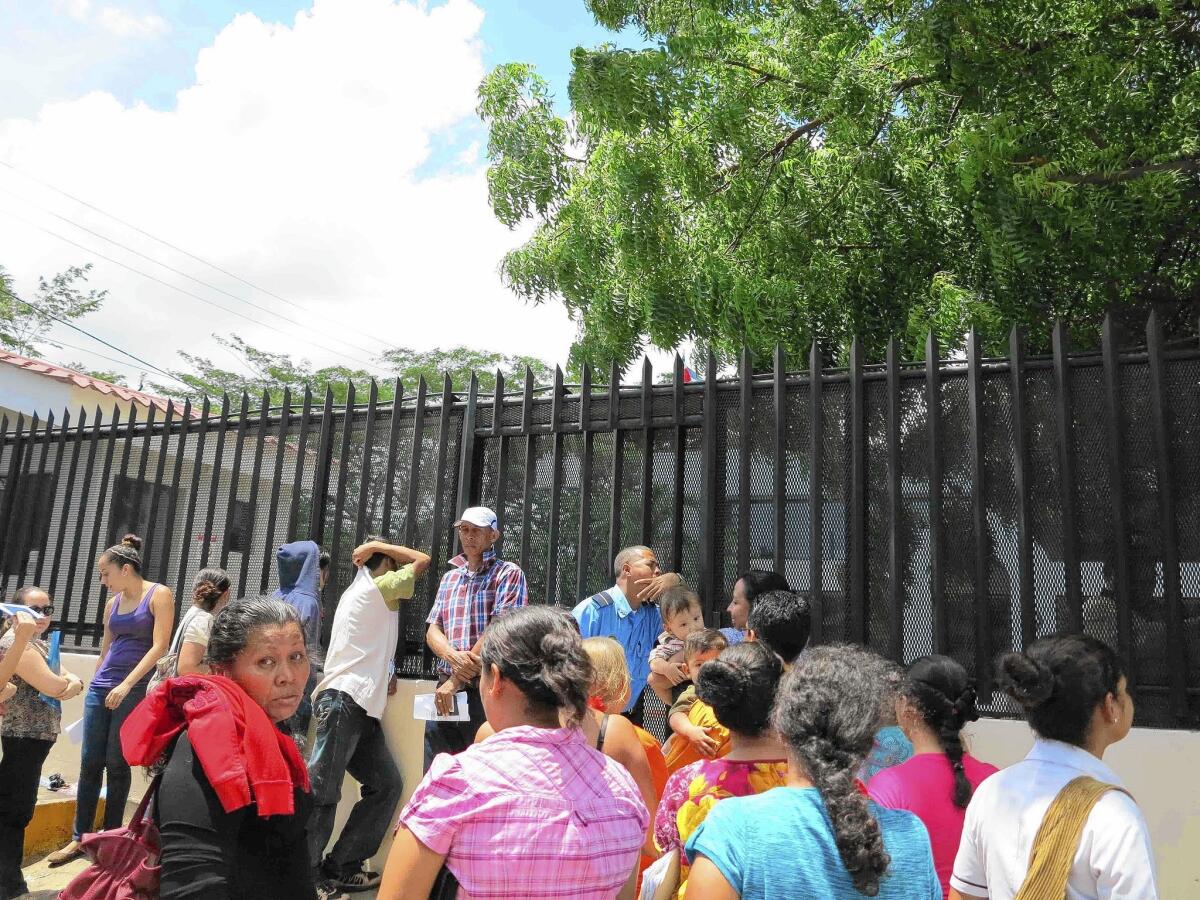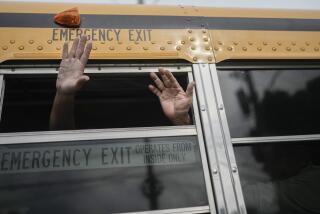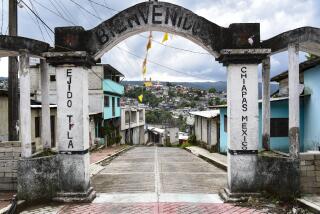Few Nicaraguans among Central America’s exodus to U.S.

- Share via
Reporting from Managua, Nicaragua — Nicaragua has many of the same problems as much of Central America. Extreme poverty. Joblessness. Violence, especially against women and children. Government repression.
And yet, in the latest exodus of Central American minors and others toward the U.S. border, Nicaragua stands apart. The numbers of Nicaraguans heading north are a tiny fraction of the total.
Among the reasons: The brutal gangs that control large swaths of Honduras, El Salvador, Guatemala and Mexico have not been able to gain a foothold here. Also, violent drug traffickers arrived here later than in the rest of the region and were more quickly marginalized. Another reason is simple geography — Nicaragua lies next to the most stable Central American nation, Costa Rica, to which many immigrate for better-paying jobs.
The Nicaraguan government has long maintained tight controls over the population through police and neighborhood watch committees. During a leftist revolution that started in 1979, and then a Cold War-era conflict with U.S.-backed rebels, Nicaraguan officials set up systems that penetrated communities and provided intelligence to authorities.
When Nicaraguans emigrate — and many do — they are more likely to go south to Costa Rica or farther south to Panama, where work is relatively plentiful and pays much better, than to the Southwestern United States.
Daily long lines outside the Costa Rican Consulate here in Managua attest to that; visas are a fraction of what a U.S. version would cost: about $30 for Costa Rica and $60 to transit Costa Rica to Panama. Some people camp out to ensure a good place in line. There are said to be nearly half a million Nicaraguans living and working in Costa Rica, almost 8% of Nicaragua’s population.
“Undoubtedly, it is safer here than in other parts of the region. But it is also much less safe than before,” said Monica Zalaquett, executive director of the privately run Violence Prevention Center in Managua.
“Homicides are low, but the citizens’ perception is of more robberies, more gun trafficking … more use of drugs like cocaine,” she said.
According to United Nations data, Nicaragua has the second-lowest homicide rate in Central America, after Costa Rica. Eleven homicides per 100,000 in population were reported in 2012, compared with 90 in neighboring Honduras.
Some activists suspect the increasingly authoritarian and closed government of President Daniel Ortega, a former commander of the Sandinista revolutionaries, may be underreporting the statistics. But even so, the contrast with Honduras is startling.
Inspector Sergio Rivas, a 17-year veteran of the Nicaraguan police force, credited what he called community policing that allows authorities to keep close tabs on society.
“We are in their churches, their festivals, their businesses, their schools,” Rivas said, noting that he goes daily from house to house in his area on foot. “An outsider comes into the zone, we know.”
But, he said, it’s hard, labor-intensive work. Cops are spread thin and not well-equipped. Rivas is the only officer for a neighborhood of 7,600 residents, and he doesn’t even have a vehicle.
“It is a constant battle,” he said.
The neighborhood watch committees also help, he said. They are a legacy of the old Sandinista political cadres of the 1980s that essentially spied on residents to ferret out the disloyal during a time of war.
Mauricio Gonzalez, a ponytailed 21-year-old who works in a nail salon, said he didn’t agree that residents and police were on such friendly terms, not in his experience at least. But he does not deny that violence has declined in his neighborhood, once one of Managua’s most dangerous.
“Now you can go out at night,” Gonzalez said, attributing part of the transformation to crime-prevention training and other social programs.
That is the reverse of what one sees in Honduras, El Salvador and Guatemala, where in some neighborhoods residents don’t dare venture out after dark or cross lines of rival gangs for fear of being killed.
Nicaragua doesn’t have the most vicious gangs, like Mara Salvatrucha, which controls parts of El Salvador and Honduras and is of late allied with Mexican drug cartels. But it does have smaller ones, with fearsome names like the Dead Eaters and the Dog Killers.
A fundamental reason for the difference has to do with migration patterns over the decades. Most Nicaraguans who went to the United States in the 1980s did so legally because the Reagan administration, fighting the Sandinista government at the time, welcomed refugees presumably fleeing the leftists. Hondurans were also viewed favorably because their country served as an operating base for the U.S.-backed Contra rebels.
Not so for Salvadorans and Guatemalans, fleeing governments that Reagan supported.
Nicaraguans tended to settle in Miami and New Orleans, while Salvadorans went to Los Angeles and were sucked into a booming and bloody gang culture. They would be the first people the U.S. started deporting back to Central America in the early 1990s.
Costa Rica has served as the escape valve, said Jaime Morales, a lawmaker and a former vice president, under Ortega. “All the maids in Costa Rica are nicas,” he said. “All the field hands are nicas.”
Morales said Nicaragua’s stifling heat and a kind of laid-back national character also have tamped down violence. The war, which famously divided families, “ended, and we all went back to a habit of coexistence,” he said. “It’s not a paradise, but it’s a big contrast to El Salvador and Honduras.”
Some Nicaraguans, however, see trouble on the horizon.
On July 19, assailants with machine guns attacked convoys of Ortega supporters en route to celebrations marking the 35th anniversary of the Sandinista revolution. Five people were killed, more than 20 wounded, and a clear antigovernment message appeared to have been sent.
It was an unusually fierce attack, and so was the military response, according to human rights activists, who say dozens of houses were raided and several people taken away. At least eight will stand trial, though the Ortega government has generally kept the incident cloaked in secrecy.
Some say that is typical of the closed-fisted control Ortega and his main ruling partner, wife Rosario Murillo, exert over Nicaragua.
“The government does not accept that there are other organizations” doing grass-roots work in the communities, Zalaquett, the crime-prevention expert, said. “They want to control everything. They are closing space for civil society, and that’s sad. As civil society is rejected … there will be a lot more violence.”
More to Read
Sign up for Essential California
The most important California stories and recommendations in your inbox every morning.
You may occasionally receive promotional content from the Los Angeles Times.











